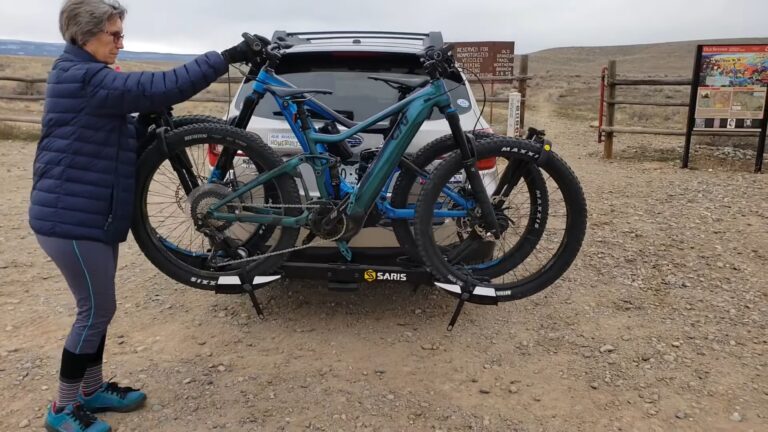When you’re driving down the road, the last thing you want is for your bike rack to start wobbling. Unfortunately, this is a common problem with many racks, and it can be extremely dangerous.
If your rack isn’t installed properly, or if it’s not the right size for your bike, it can easily start to wobble, and that can cause your bike to fall off.
Are Bike Racks Supposed to Wobble?
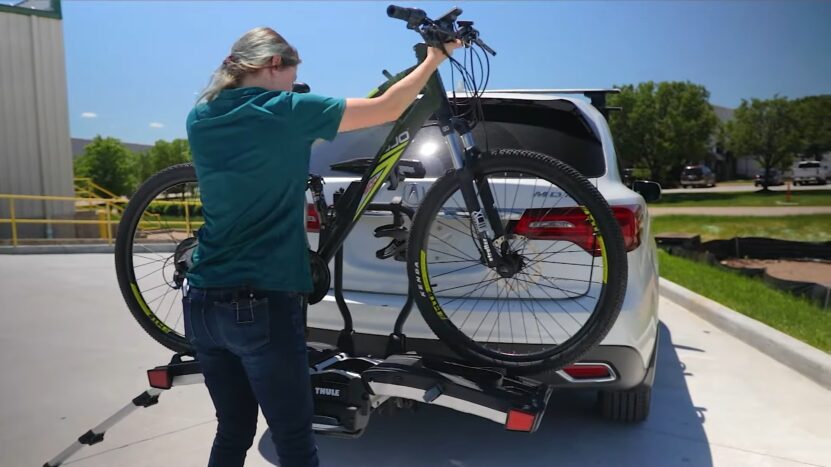
Ideally, a bike rack should be sturdy and not wobble too much. However, some amount of wobbling is to be expected, especially if the rack isn’t perfectly level. If your bike rack is constantly wobbling and moving around, it’s probably not installed correctly or is in need of repair.
Some bike racks are designed to be slightly flexible, while others should be completely rigid. If your bike rack is flexible, it’s important to make sure that it’s securely attached to your vehicle. If it’s not, it could come loose and cause an accident. If your bike rack is supposed to be rigid, then a little wobbling is probably nothing to worry about.
However, if it seems like the rack is going to fall off or collapse, you should get it checked out by a professional. Either way, it’s always a good idea to inspect your bike rack before each use to make sure it’s in good working condition.
How Much Wobble or Play Is Normal for A Hitch Rack?
If you’re using a hitch rack to haul your bikes around, you might be wondering how much wobble or play is normal. Here’s what you need to know.
Most hitch racks have some degree of wobble or play. This is normal and is no cause for concern. The amount of wobble or play will vary depending on the design of the rack and the type of bike you’re carrying.
Some hitch racks have more wobble or play than others. If you’re concerned about the amount of wobble or play on your hitch rack, you can try adjusting the tension on the rack or mounting the rack on a sturdier vehicle.
It really depends on the design and construction of the bike rack. Some designs are inherently more stable than others. If you have a very sturdy rack, then not much wobble or play should be expected. However, if you have a less sturdy rack, then some wobble or play might be normal. Either way, it’s always best to check with the manufacturer to see what they recommend.
How Do I Stop My Bike Rack From Wobbling?
There are a few different things that you can do in order to stop your bike rack from wobbling. First, make sure that the rack is properly secured to the vehicle. If it is not, then it will obviously move around more and cause more instability.
Secondly, check to see if the straps or other securing mechanisms are tight enough. If they are loose, then they will also allow for more movement and instability.
Finally, if all else fails, you can try adding weight to the rack itself (such as by filling up water bottles and placing them on the rack) to help keep it more stable. If you follow these tips, then you should be able to stop your bike rack from wobbling and have a much more stable and enjoyable ride.
Hitch-Mounted Bike Rack
If you’re looking for a way to transport your bike without adding a lot of extra weight or bulk to your vehicle, a hitch-mounted bike rack is a great option. These racks typically mount to the back of your car or SUV and provide a stable platform for holding one or more bikes.
Some models even allow you to fold them down when not in use, so they won’t get in the way when you’re not biking. When choosing a hitch-mounted bike rack, it’s important to consider how many bikes you’ll be carrying and what type of vehicles you’ll be using it with.
There are models available that can accommodate up to four bikes, so if you often ride with friends or family, this might be a good option for you. If you only ride solo, a smaller rack that can carry one or two bikes might be all you need.
You’ll also want to make sure the rack you choose is compatible with the hitch on your vehicle. Most racks will work with either 1.25-inch or 2-inch hitches, but it’s always best to check the manufacturer’s specifications to be sure. Some models may also require the use of an adapter for certain vehicles.
Once you’ve selected the perfect hitch-mounted bike rack for your needs, it’s time to install it. This process is typically pretty simple and can usually be done in just a few minutes. If you’re not comfortable doing it yourself, many retailers offer installation services for an additional fee.
With a hitch-mounted bike rack, you’ll be able to hit the road and enjoy your rides without having to worry about how you’re going to transport your bikes. These racks are a great option for anyone who wants an easy, convenient way to take their bikes with them wherever they go.
Trunk or Roof-Mounted Bike Rack
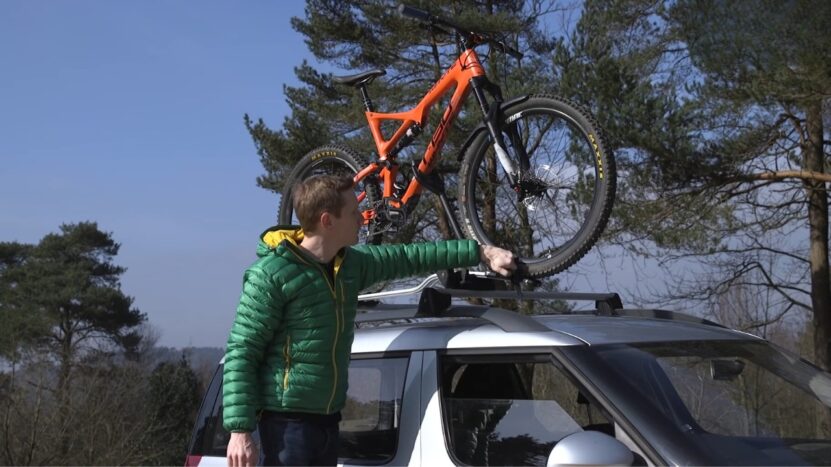
A trunk or roof-mounted bike rack is one of the most popular ways to transport your bike. These racks allow you to securely attach your bike to your car, making it easy to get from point A to point B. There are a few things to consider when choosing a trunk or roof-mounted bike racks, such as the type of rack, the size of your car, and the number of bikes you need to transport.
The Trunk or Roof-Mounted Bike Rack is a great choice for those who want an easy and convenient way to transport their bikes. It is quick and easy to install, and it includes all the necessary hardware. The rack is also very durable, making it a great choice for those who need a reliable option for transporting their bikes.
There are two main types of trunk or roof-mounted bike racks: strap-on and hitch-mounted. Strap-on racks are the most common type of rack and are typically less expensive than hitch-mounted racks. They attach to your car using straps.
How Do I Stop My Bike Rack From Wobbling?
If you’re noticing that your bike rack is wobbling, it’s likely due to one of two things. Either the rack is not installed correctly, or the rack itself is damaged. To fix a wobbling bike rack, first, check to make sure that it is installed correctly.
If the rack is loose, tighten all of the bolts. If the rack is still wobbling, you may need to replace it. Damaged bike racks can cause serious problems, so if you notice any damage, it’s important to replace the rack as soon as possible.
Look for signs of rusting, bending, or other damage. If you’re not sure whether or not the damage is bad enough to warrant replacing the rack, consult a professional.
With a little bit of troubleshooting, you can easily fix a wobbling bike rack. Be sure to regularly check your rack for damage, and replace it if necessary. This will ensure that you can continue to safely and securely transport your bikes.
Are Bike Racks Supposed to Bounce?
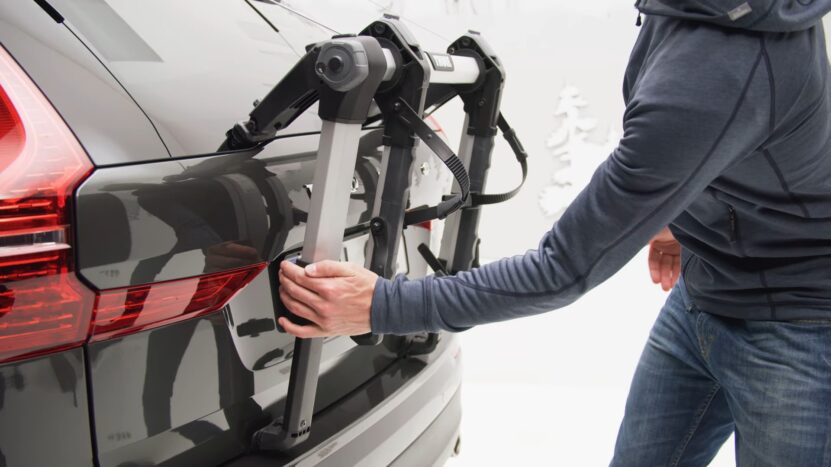
If you’ve ever parked your bike at a rack and noticed that it seems to bounce more than usual, you might be wondering if something is wrong.
Well, there’s no need to worry this is actually quite normal! It turns out that bike racks are designed to have a bit of giving so that they can absorb impacts and protect both your bike and the rack itself. So, if you notice your bike bouncing a bit when you park it, don’t worry it’s just the design doing its job.
Of course, if you’re concerned that your bike isn’t secure, you can always double-check by giving the rack a shake. If it feels loose or unstable, then you may want to find another spot to park. But if it’s just a little bouncy, then there’s no need to worry – your bike will be just fine.
What Is Better a Hanging or Platform Bike Rack?
There are a few things to consider when deciding whether a hanging or platform bike rack is better for you, including whether they are universally compatible with different bike frame styles and sizes. If you have a hitch on your vehicle, then a platform rack is likely the better option.
Platform racks are also generally easier to load and unload bikes since they don’t require lifting the bikes up onto the rack. However, hanging racks can be more compact and easier to store when not in use.
Ultimately, it comes down to personal preference and what will work best for your specific needs.
Where Should a Bike Rack Be Placed?
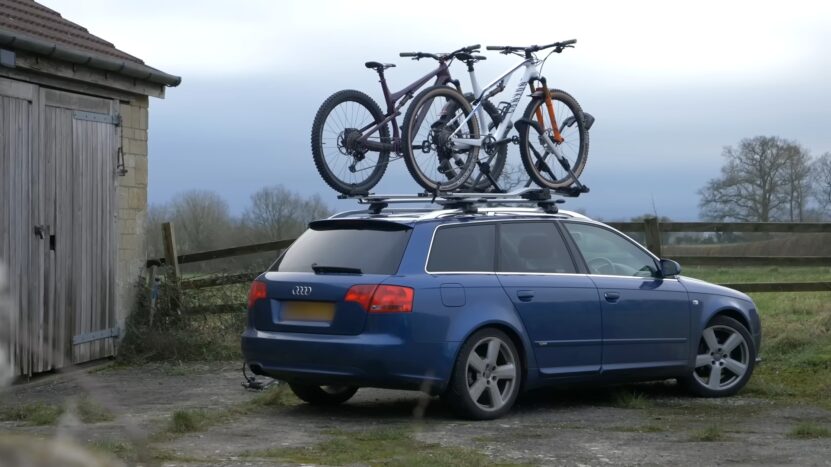
As a general rule, bike racks should be placed in high-traffic areas where they will be easily seen and accessible. However, there are a few other factors to consider when deciding on the placement of bike racks.
The proximity to destinations such as businesses, public transit, and residential buildings. Bike racks should be placed close enough to these places so that people can easily lock up their bikes when they need to.
The amount of space available. It’s important to make sure that there is enough room for people to park their bikes without blocking pathways or creating hazards.
The level of security desired. For example, placing bike racks in well-lit areas or near security cameras can help deter theft. The type of bike rack.
There are many different types of bike racks, and each has its own advantages and disadvantages. Some bike racks are more secure than others, while some are better suited for tight spaces. When it comes to deciding on the placement of bike racks, the most important thing is to consider the needs of those who will be using them.
By taking into account factors such as proximity to destinations, amount of space available, and level of security desired, you can ensure that bike racks are placed in the most convenient and effective locations.
Do Bike Racks Sway?
Yes, bike racks can sway. This is because they are usually made from metal or plastic, which are not particularly strong materials. However, if you use a properly designed and installed bike rack, the amount of sway should be minimal.
There are a few things you can do to reduce the amount of sway in your bike rack:
Use a heavier-duty bike rack. Heavier duty racks are made from stronger materials and will be less likely to sway. Install the bike rack on a concrete pad. This will help to stabilize the rack and reduce sway. Use straps or chains to secure the bike rack to a solid object. This will help to keep the rack from moving around.
If you follow these tips, you should be able to minimize the amount of sway in your bike rack.
How Can I Make My Bike Rack More Secure?
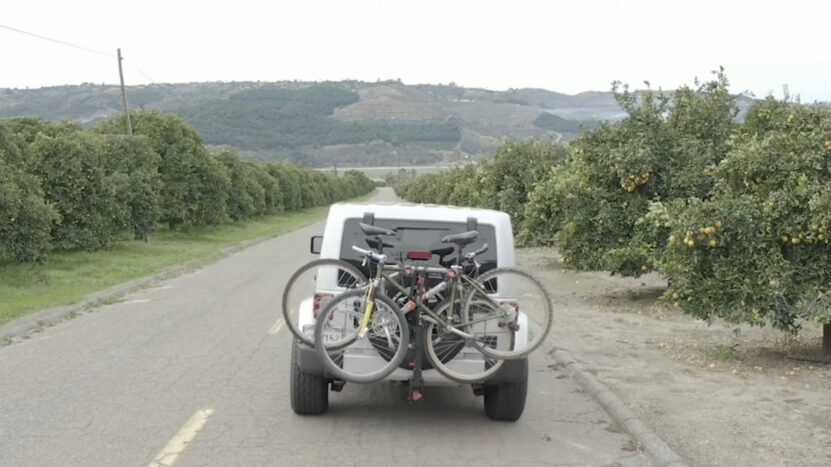
If you’re worried about your bike rack being stolen, there are a few things you can do to make it more secure.
First, consider buying a lockable bike rack. These racks come with a built-in locking system that will deter thieves from trying to steal your bikes. You can also add your own security measures, such as attaching a cable lock to the rack or adding a padlock to the bikes themselves.
Finally, make sure to park your bike in a well-lit and visible spot so that potential thieves will think twice before attempting to steal it. By following these simple tips, you can help keep your bike safe and sound.
Do Bike Racks Damage Your Car?
Bike racks are a great way to transport your bicycle, but they can also damage your car if not used correctly. Here are a few tips to avoid damaging your car when using a bike rack:
Make sure the bike rack is properly secured to your car before attaching any bikes. Be careful when loading and unloading bikes onto the rack, as you can scratch or dent your car if done incorrectly.
Always check the bike rack for stability before driving, as an unstable rack can cause damage to your car while in transit. Following these simple tips will help ensure that you can enjoy your next biking adventure without worry!
Should I Leave My Bike Rack On My Car?
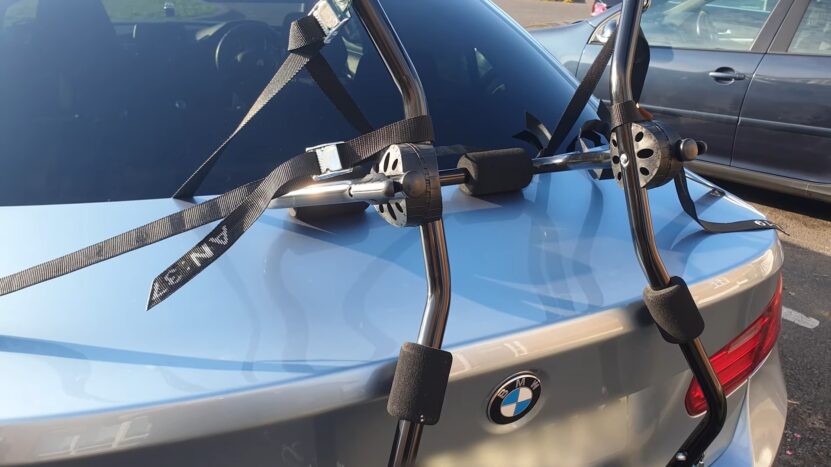
Leaving your bike rack on your car can be convenient if you frequently use it and don’t want to have to remove and reattach it each time. However, it also means that your car is less aerodynamic and gets worse gas mileage. If you only use your bike rack occasionally, it might be better to take it off when you’re not using it.
Ultimately, the decision of whether or not to leave your bike rack on your car depends on how often you use it and how much of a different fuel economy makes to you.
Are Strap-On Bike Racks Safe?
There is some debate over whether strap-on bike racks are safe. Some cyclists argue that they are not as secure as other types of bike racks and that they can cause damage to your bicycle if not used correctly. Others argue that strap-on bike racks are just as safe as any other type of rack and that they offer a convenient way to transport your bike.
The answer may depend on how you plan to use them. If you are planning on using a strap-on rack to transport your bicycle long distances, or if you plan on carrying multiple bikes on one rack, then you may want to reconsider. These racks can be less stable than other types of racks, and they may not provide as much protection for your bikes.
On the other hand, if you are only using a strap-on rack to transport your bike short distances, or if you only plan on carrying one bike on the rack, then you may find that a strap-on rack is just as safe as any other type of rack.
These racks can be just as stable as other types of racks, and they can provide adequate protection for your bike. If you are concerned about the safety of these racks, then you may want to consider using another type of rack.
Conclusion
In conclusion, it is evident that bike racks are not supposed to wobble.
However, if they do, it is not a cause for alarm. If you notice that your bike rack is wobbling, please reach out to the appropriate authorities and they will be sure to fix the issue as soon as possible.

